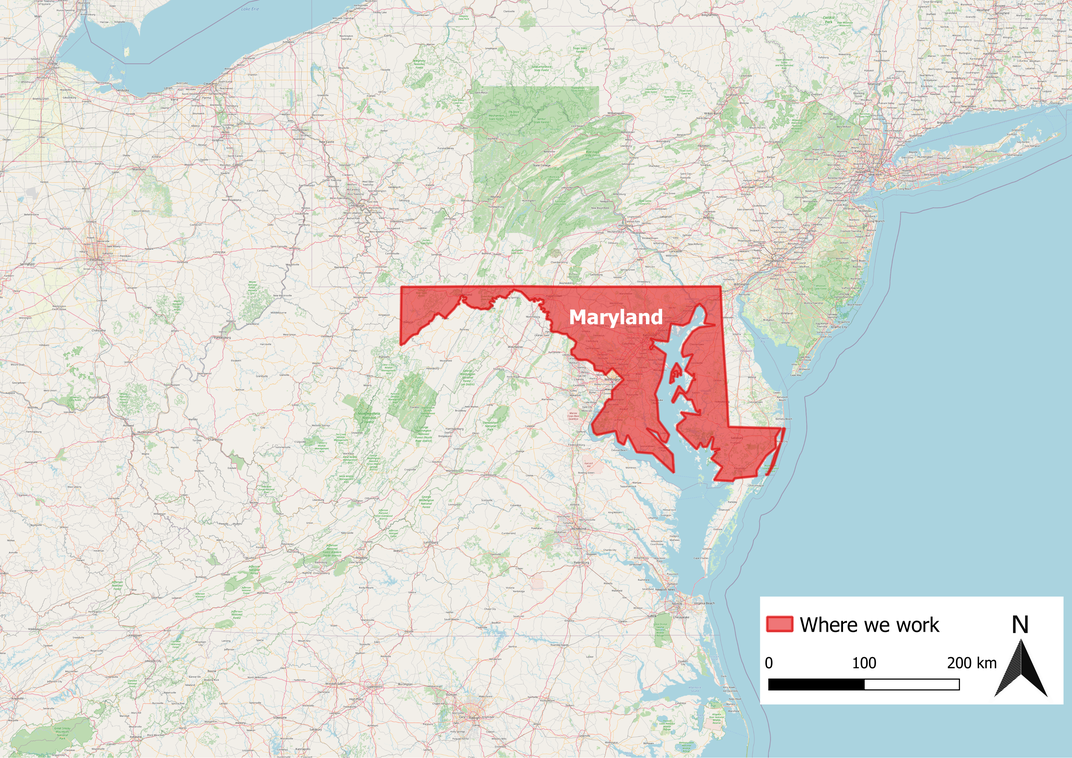The brown pelican is a commonly seen bird that frequents coastal areas along the east coast of the United States. A species that was affected by the use of DDT, Smithsonian scientists track individuals to understand how they are redistributing while their populations continue to recover.

Weight: 2-5kg (4.4-11lbs)
Wingspan: 2m (6.5ft)
Brown pelican’s bill is about 28-35 cm (11-13.7 inches) long and can hold up to three gallons of water. Brown pelicans capture their prey using steep diving maneuvers from heights up to 20m (65ft)!
Conservation Status: Least Concern

Movement of Life scientist Autumn-Lynn Harrison has worked to tag six adult brown pelicans from a breeding colony in Maryland in an attempt to learn more about their habitat use in the Chesapeake Bay as well as their migratory behavior. By outfitting these individuals with solar-powered GPS transmitters, location data can be collected to understand variables like migration timing, resource use, and impacts of extreme weather events.

While it’s common to see pelicans along the eastern shores of the United States now, their populations were in steep decline due to the widespread use of DDT from the early 1940s until it was banned in 1972. The species was listed as endangered in 1970, but since the DDT ban there has been a decrease in pollutants detected in the pelican’s shells, leading to an increase in population. Now that pelican populations have stabilized, they are facing other threats such as extreme weather events (such as hurricanes that destroy their ground nests) and habitat fragmentations caused by a rapidly developing coastline. By tracking individuals from their recently established colonies at the northern part of their Atlantic coast breeding range, Movement of Life scientists like Autumn-Lynn hope to discover how this large predator uses Chesapeake Bay habitats if its migration routes and timing of migration are similar to birds nesting farther south, as well as the resources that are necessary to maintain this conservation success story.
Research Ecologist
Smithsonian Migratory Bird Center Smithsonian National Zoo & Conservation Biology Institute
Walter, S.T.; Carloss, M.R.; Hess, T.J.; and Leberg, P.L., 2013. Hurricane, habitat degradation, and land loss effects on Brown Pelican nesting colonies.
Walter, S.T.; Carloss, M.R.; Hess, T.J.; Athrey, G.; and Leberg, P.L., 2013. Movement patterns and population structure of the Brown Pelican.
FONZ
Maryland DNR
Clemson University